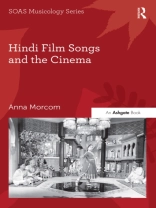Since their beginnings in the 1930s, Hindi films and film songs have dominated Indian public culture in India, and have also made their presence felt strongly in many global contexts. Hindi film songs have been described on the one hand as highly standardized and on the other as highly eclectic. Anna Morcom addresses many of the paradoxes eccentricities and myths of not just Hindi film songs but also of Hindi cinema by analysing film songs in cinematic context. While the presence of songs in Hindi films is commonly dismissed aspurely commercial this book demonstrates that in terms of the production process, musical style, and commercial life, it is most powerfully the parent film that shapes and defines the film songs and their success rather than the other way round. While they constitute India‘s still foremost genre of popular music, film songs are also situational, dramatic sequences, inherently multi-media in style and conception. This book is uniquely grounded in detailed musical and visual analysis of Hindi film songs, song sequences and films as well as a wealth of ethnographic material from the Hindi film and music industries. Its findings lead to highly novel ways of viewing Hindi film songs, their key role in Hindi cinema, and how this affects their wider life in India and across the globe. It will be indispensable to scholars seeking to understand both Hindi film songs and Hindi cinema. It also forms a major contribution to popular music, popular culture, film music studies and ethnomusicology, tackling pertinent issues of cultural production, (multi-)media, and the cross-cultural use of music in Hindi cinema. The book caters for both music specialists as well as a wider audience.
Anna Morcom
Hindi Film Songs and the Cinema [PDF ebook]
Hindi Film Songs and the Cinema [PDF ebook]
Dieses Ebook kaufen – und ein weitere GRATIS erhalten!
Format PDF ● Seiten 306 ● ISBN 9781351563741 ● Verlag Taylor and Francis ● Erscheinungsjahr 2017 ● herunterladbar 3 mal ● Währung EUR ● ID 5325987 ● Kopierschutz Adobe DRM
erfordert DRM-fähige Lesetechnologie












